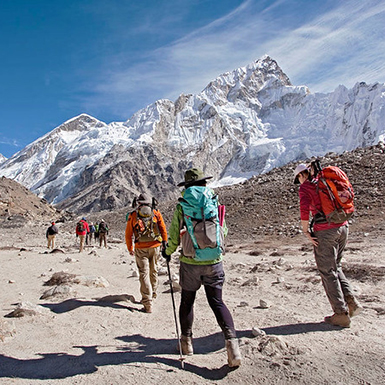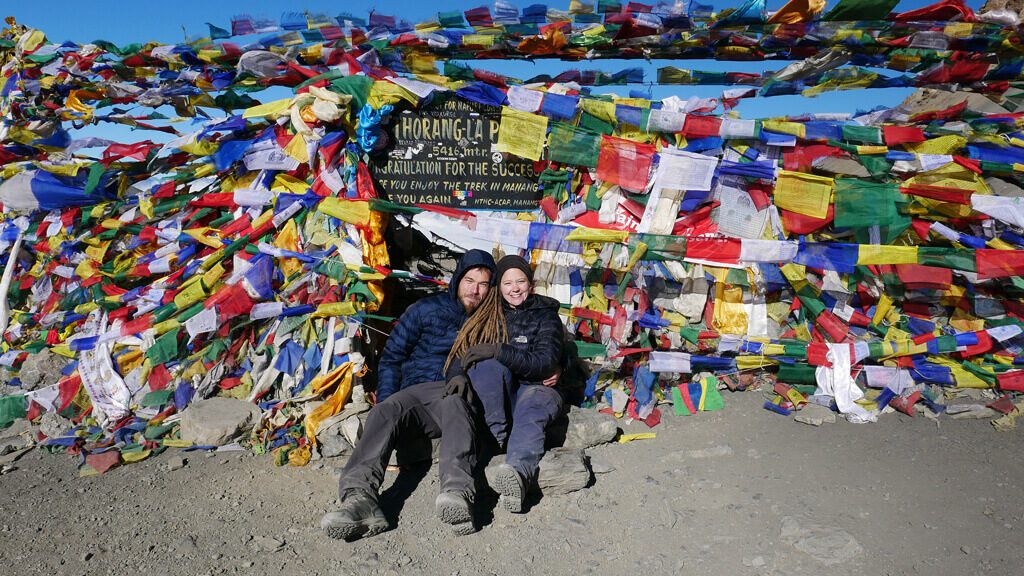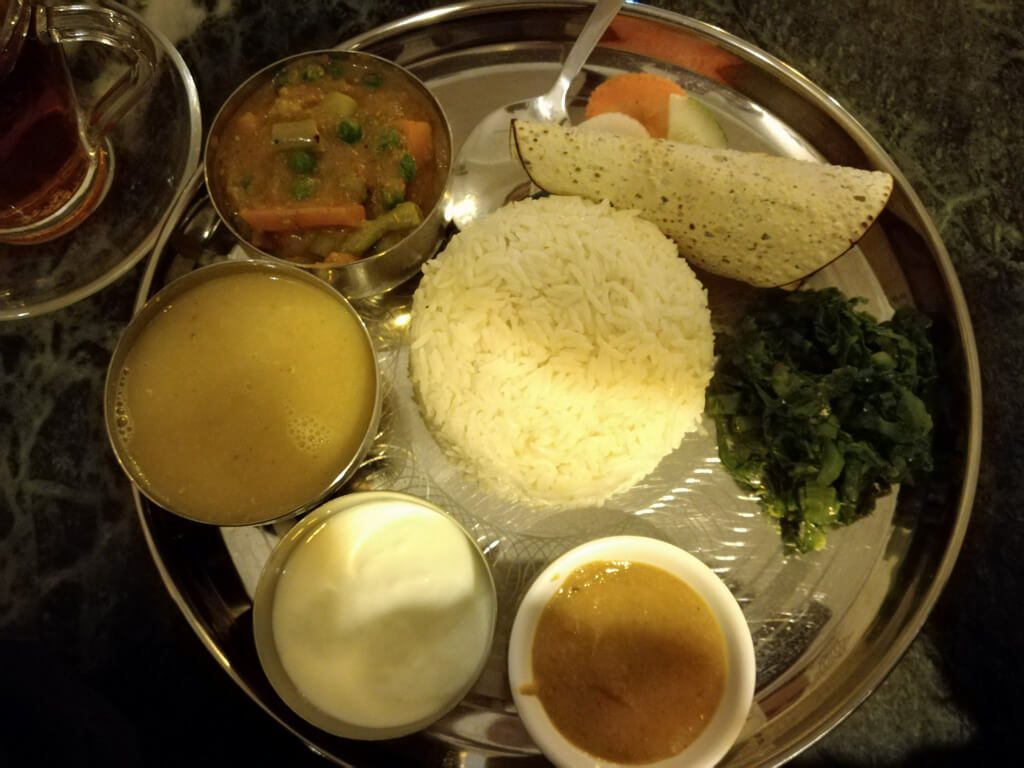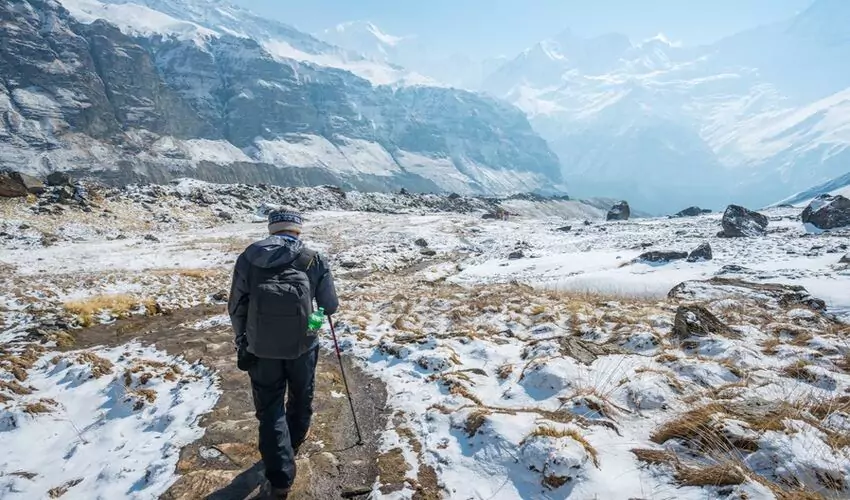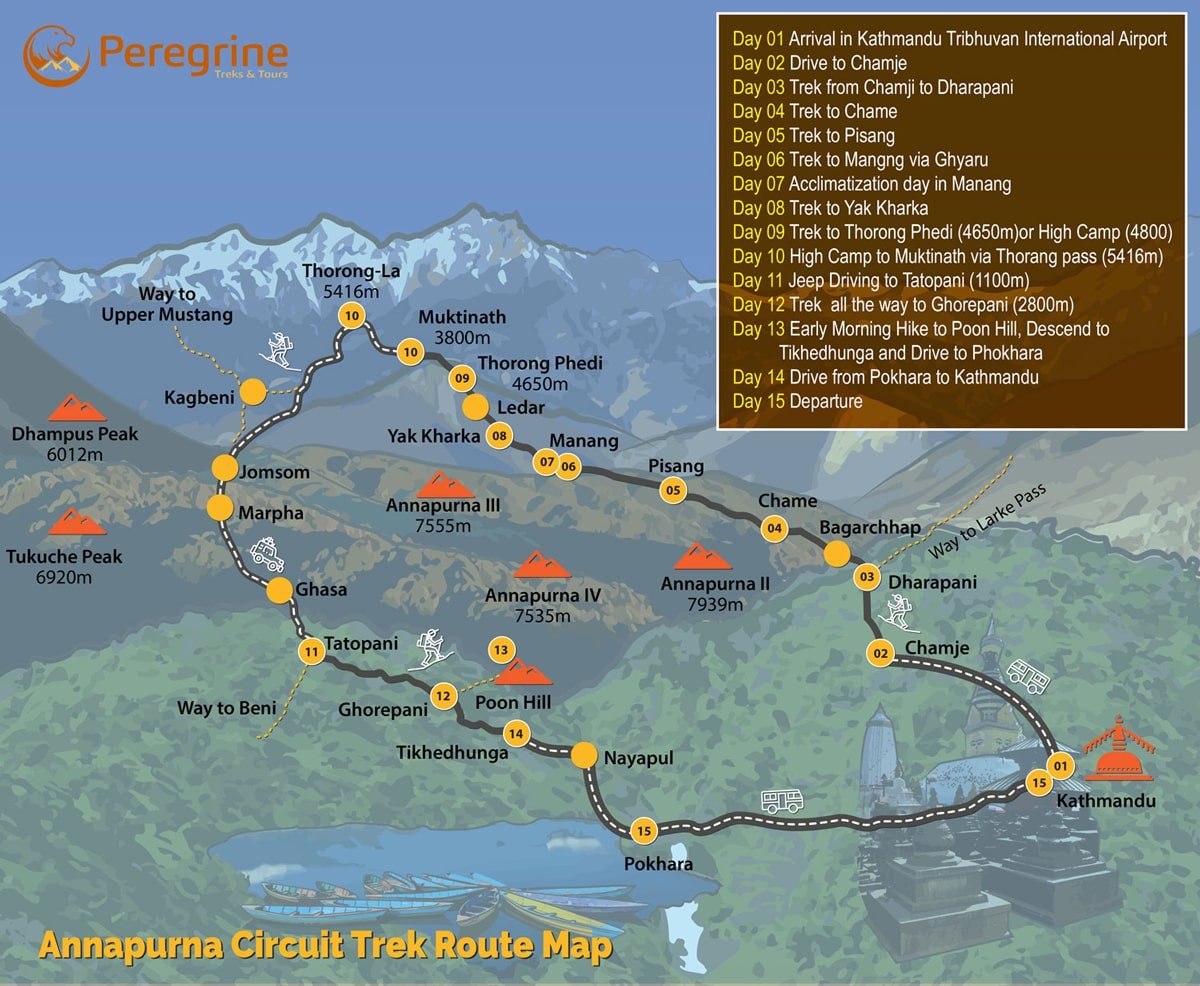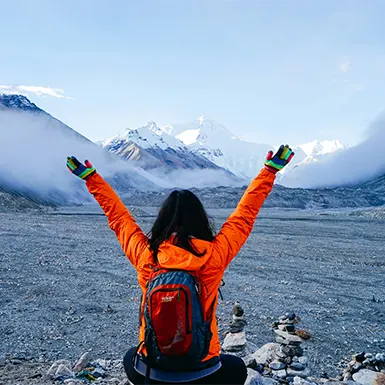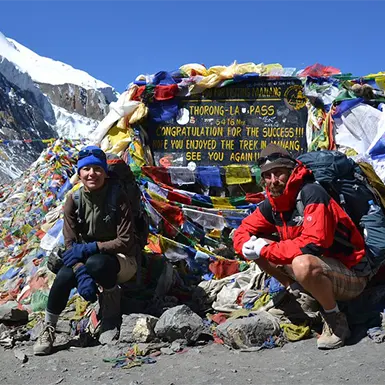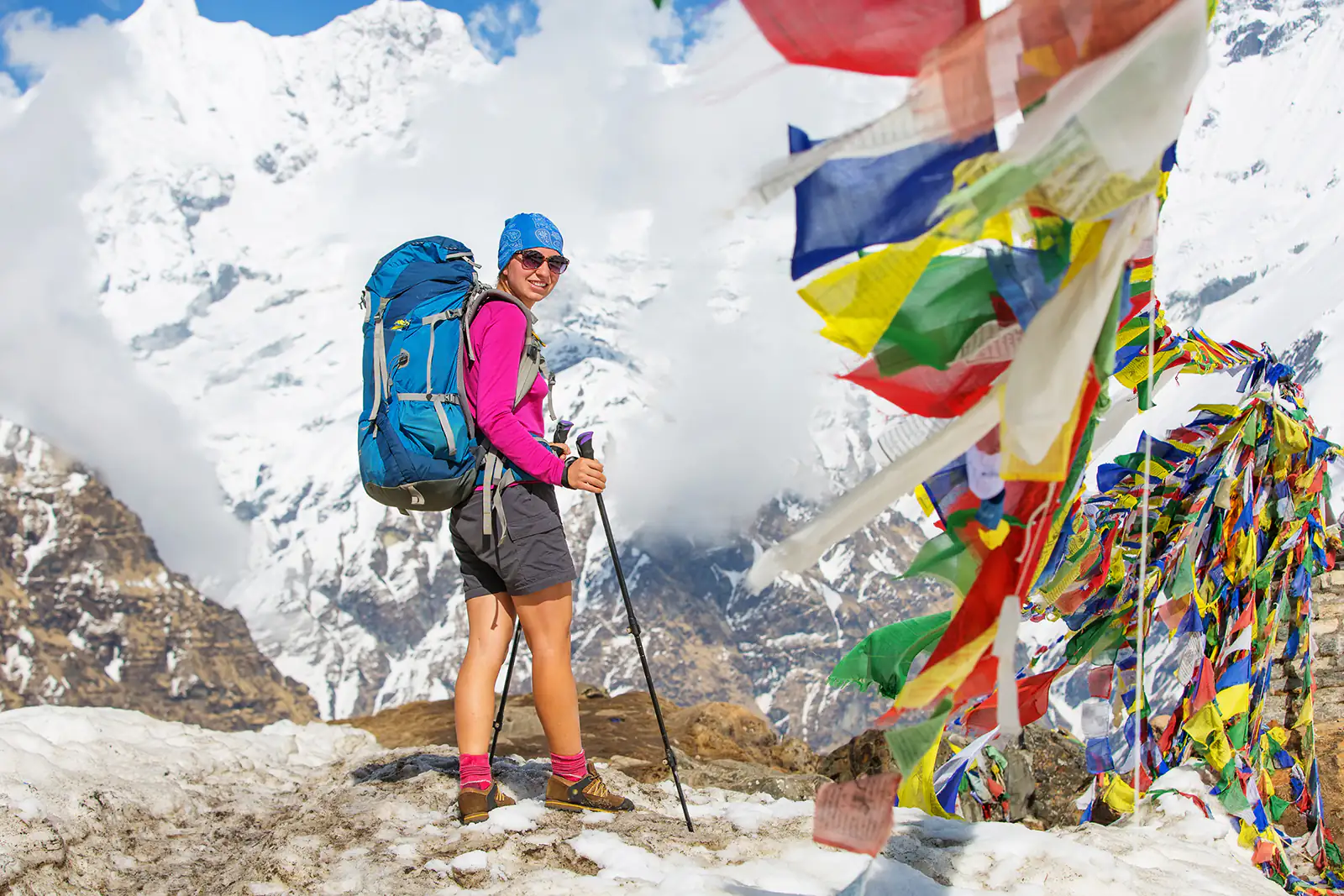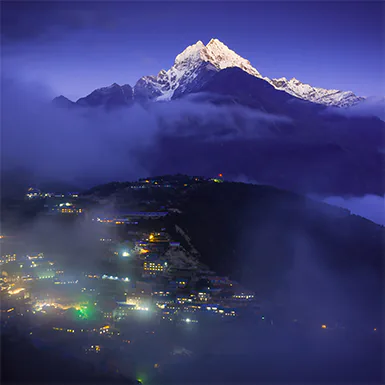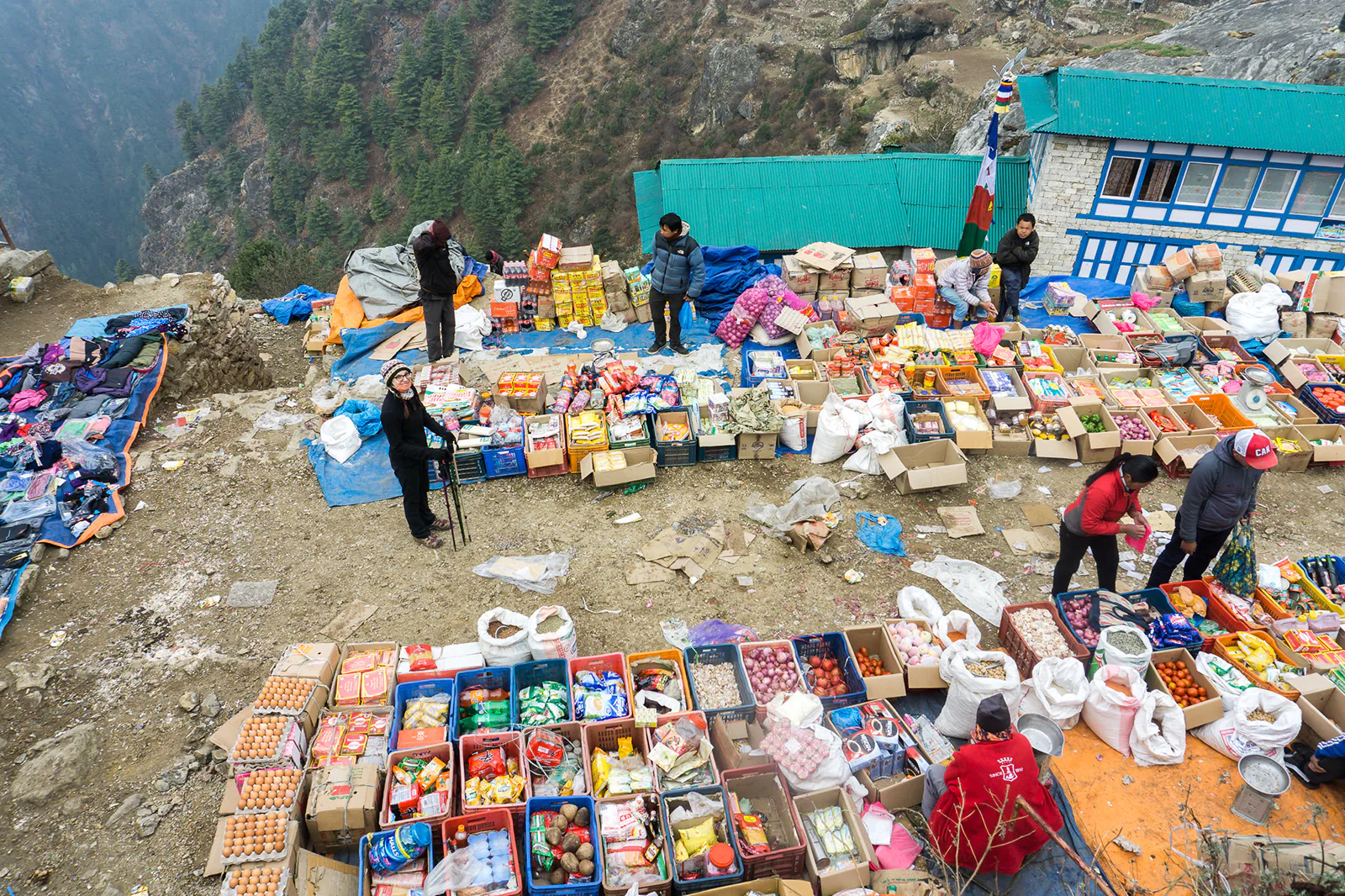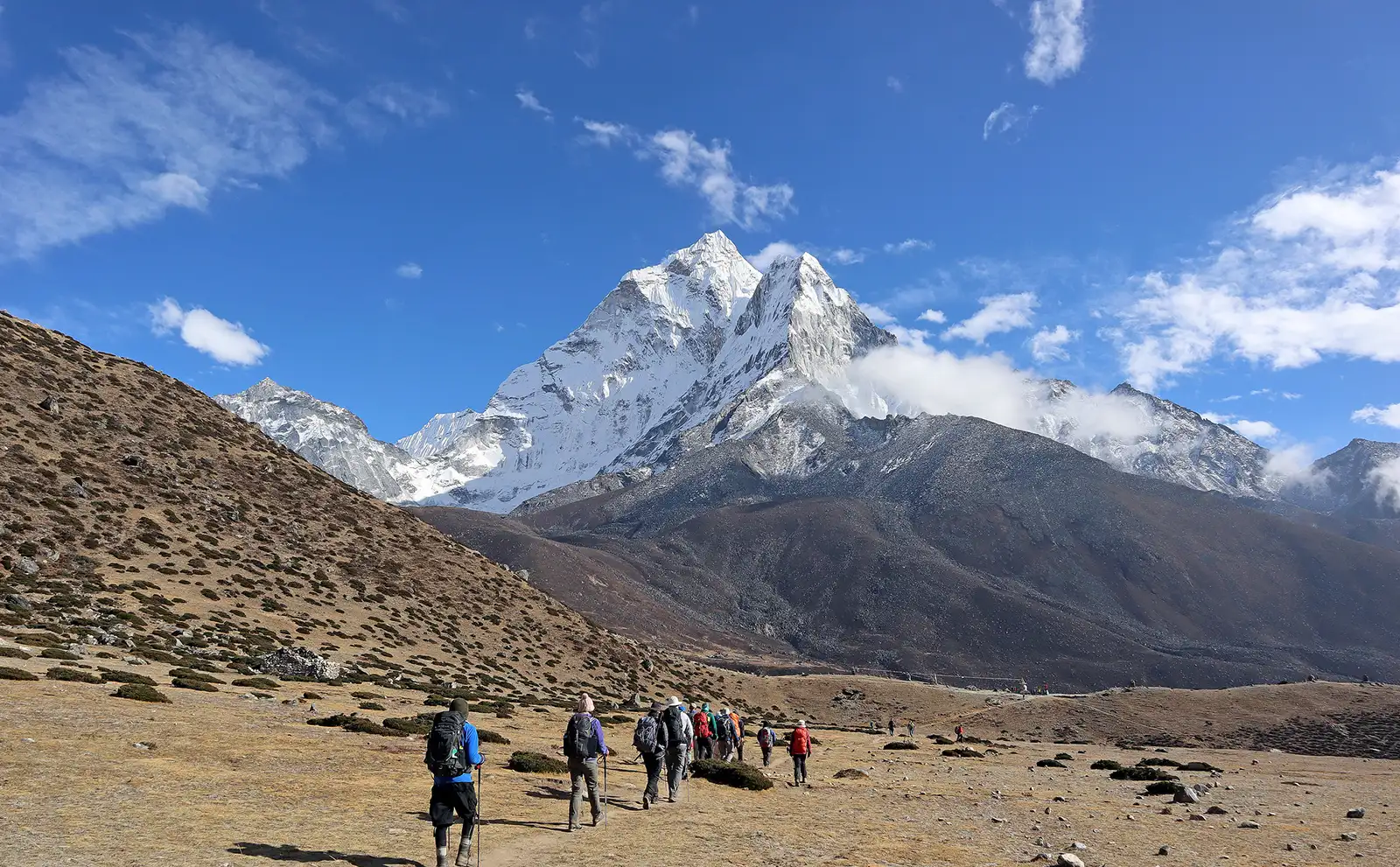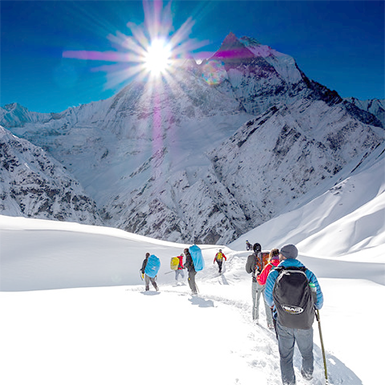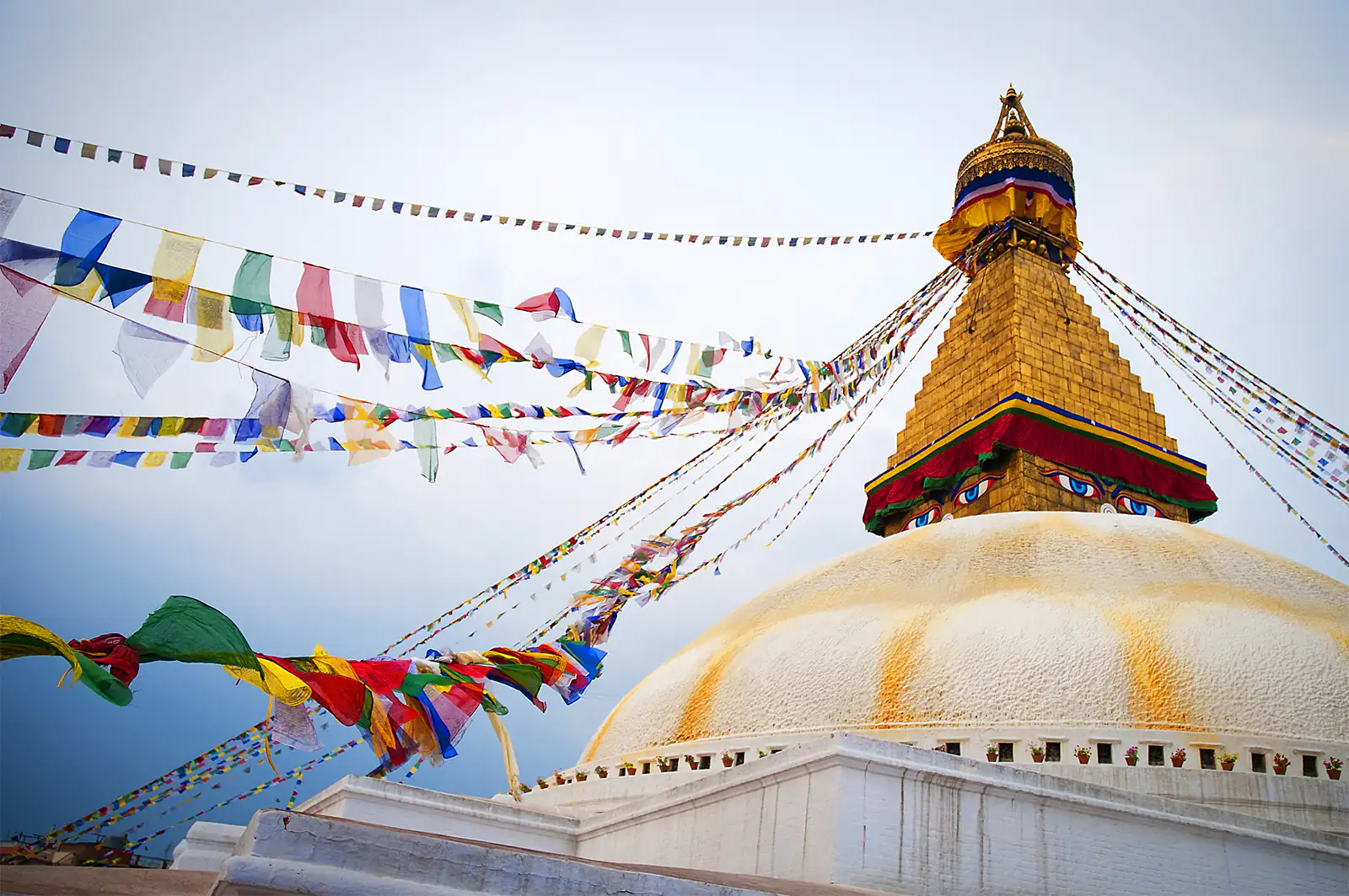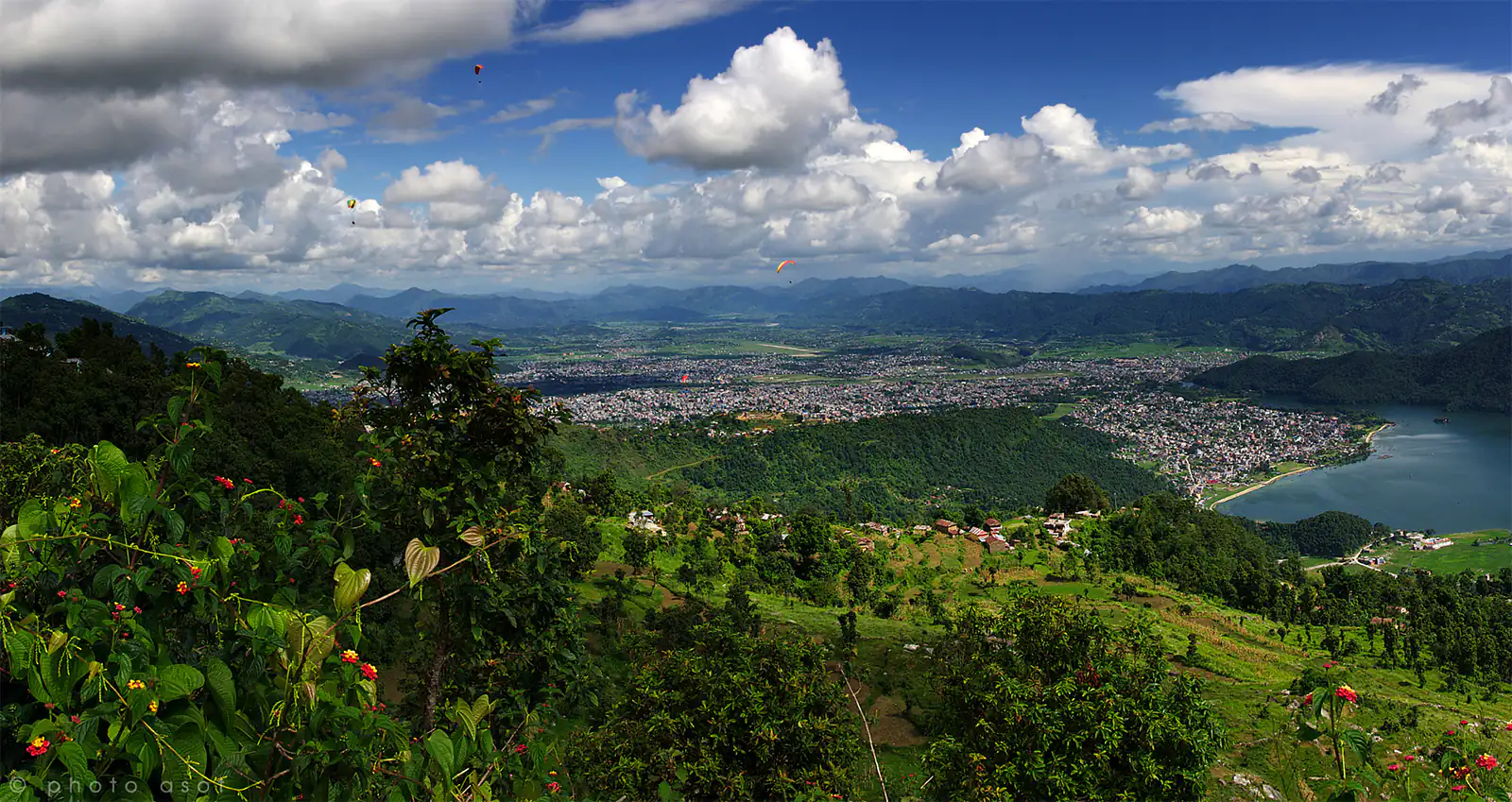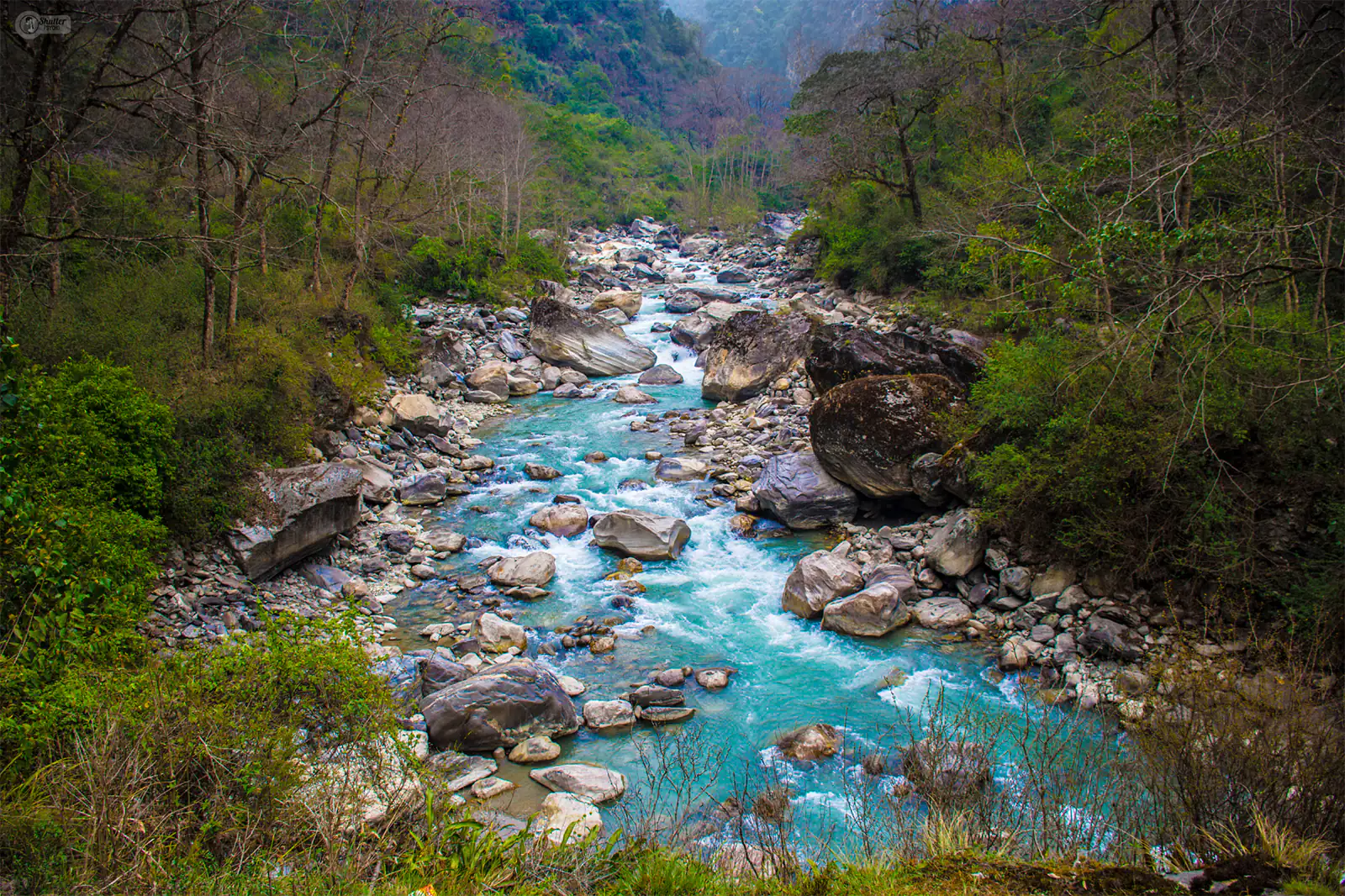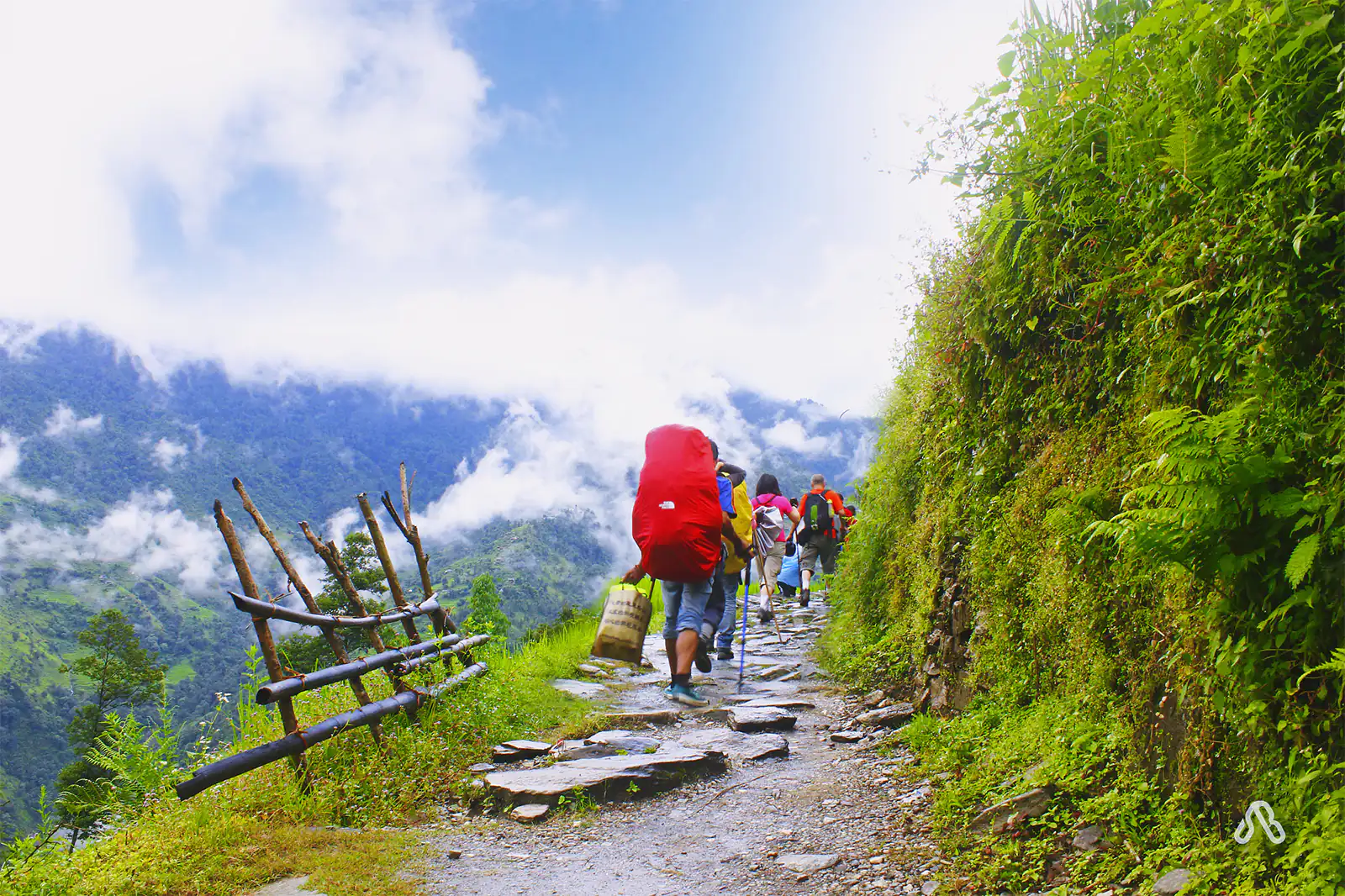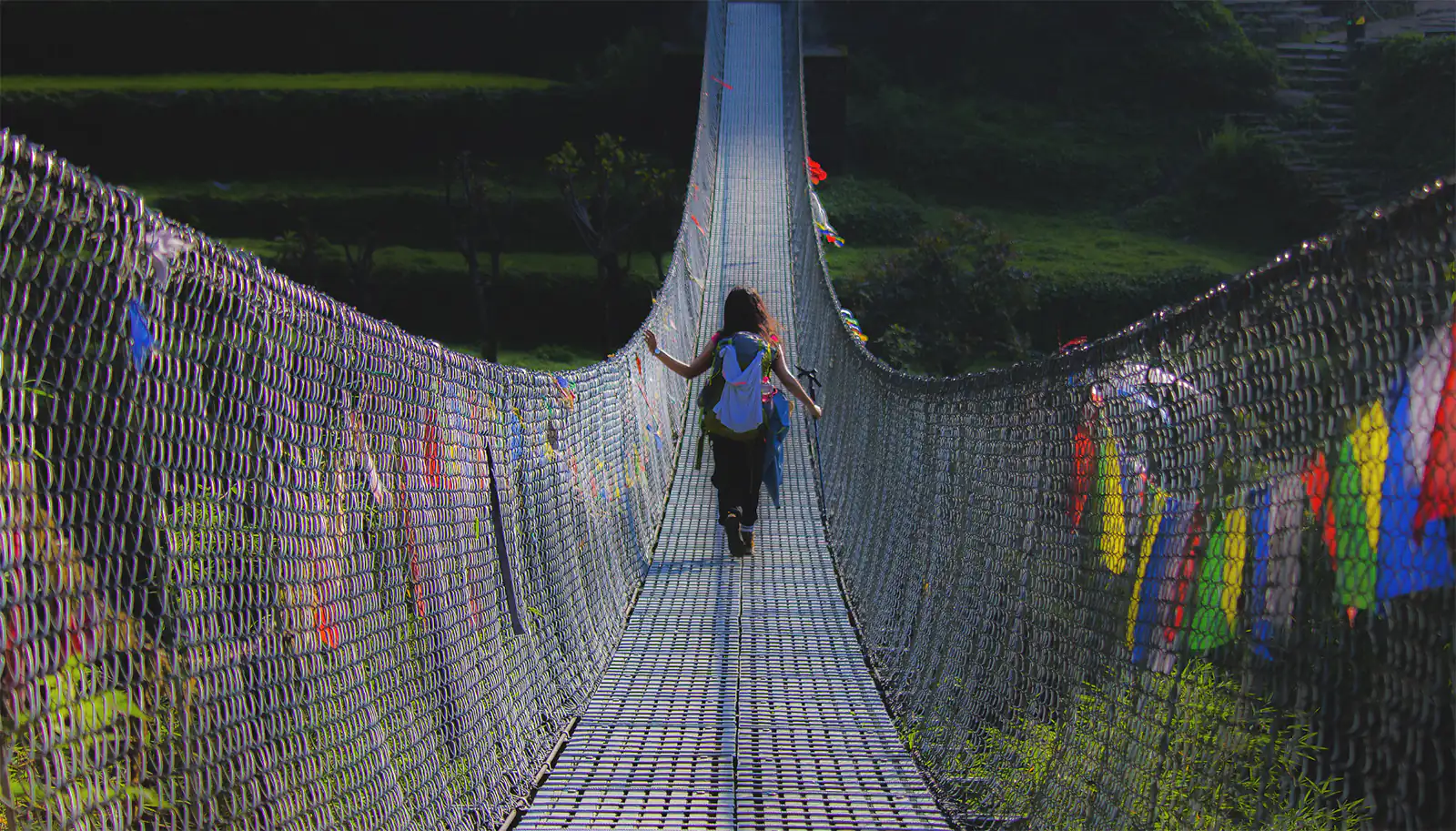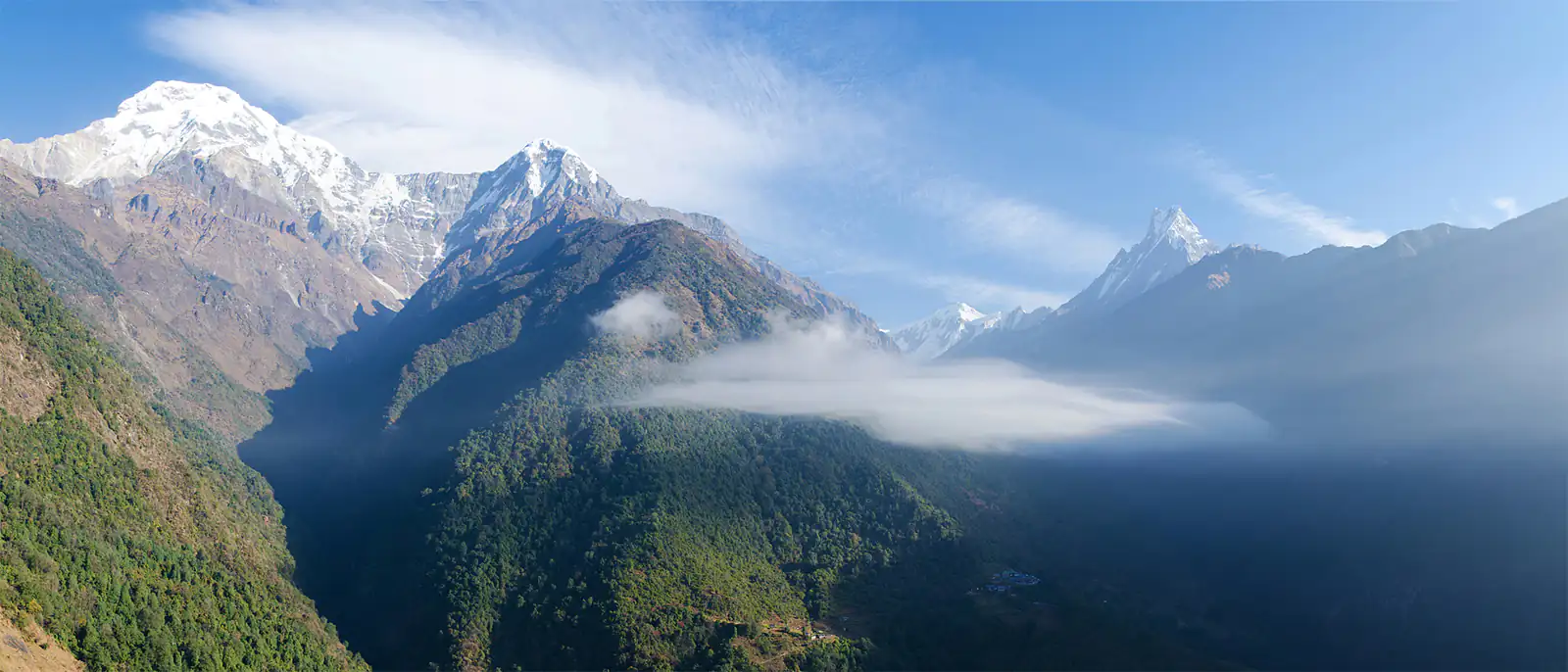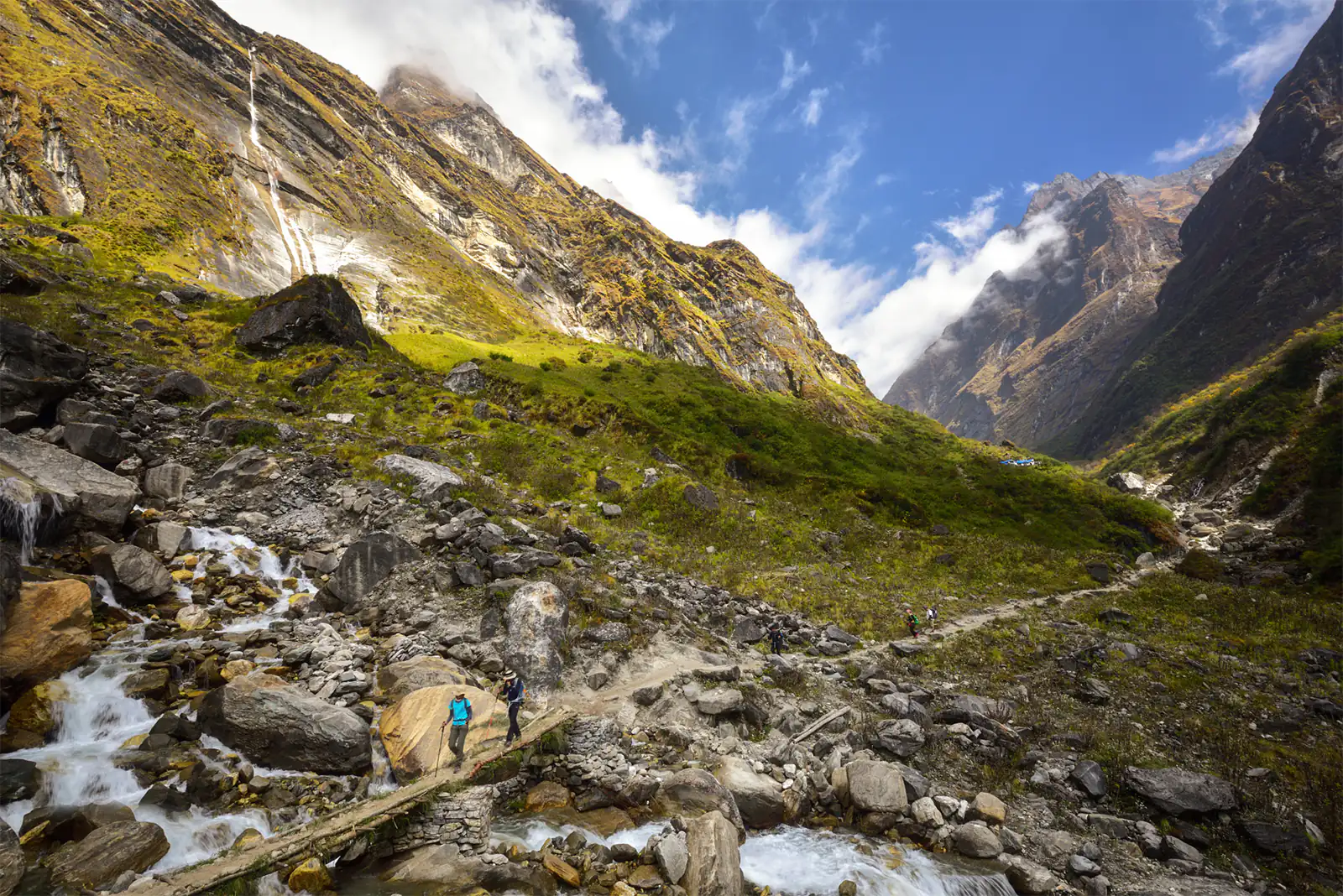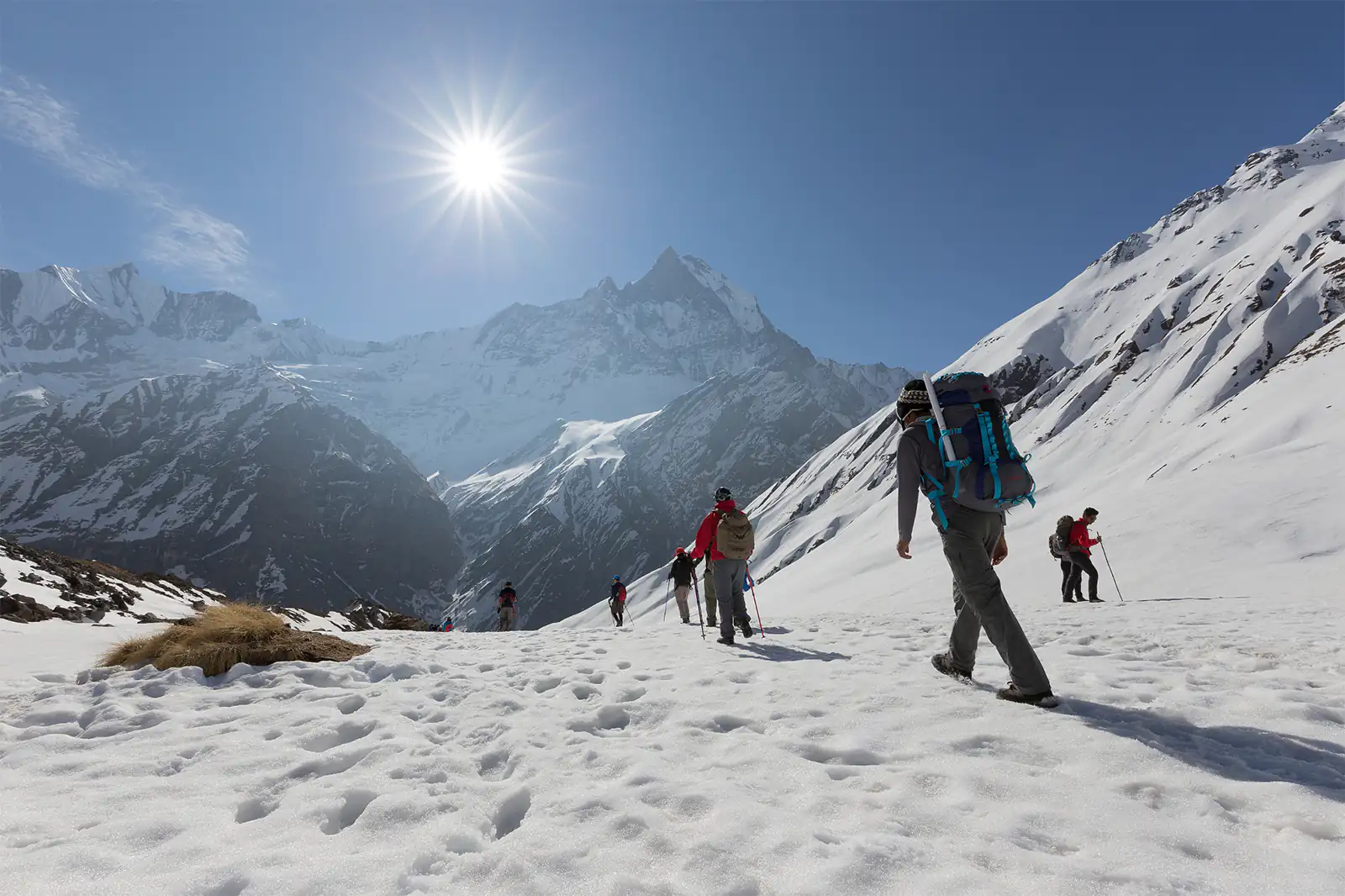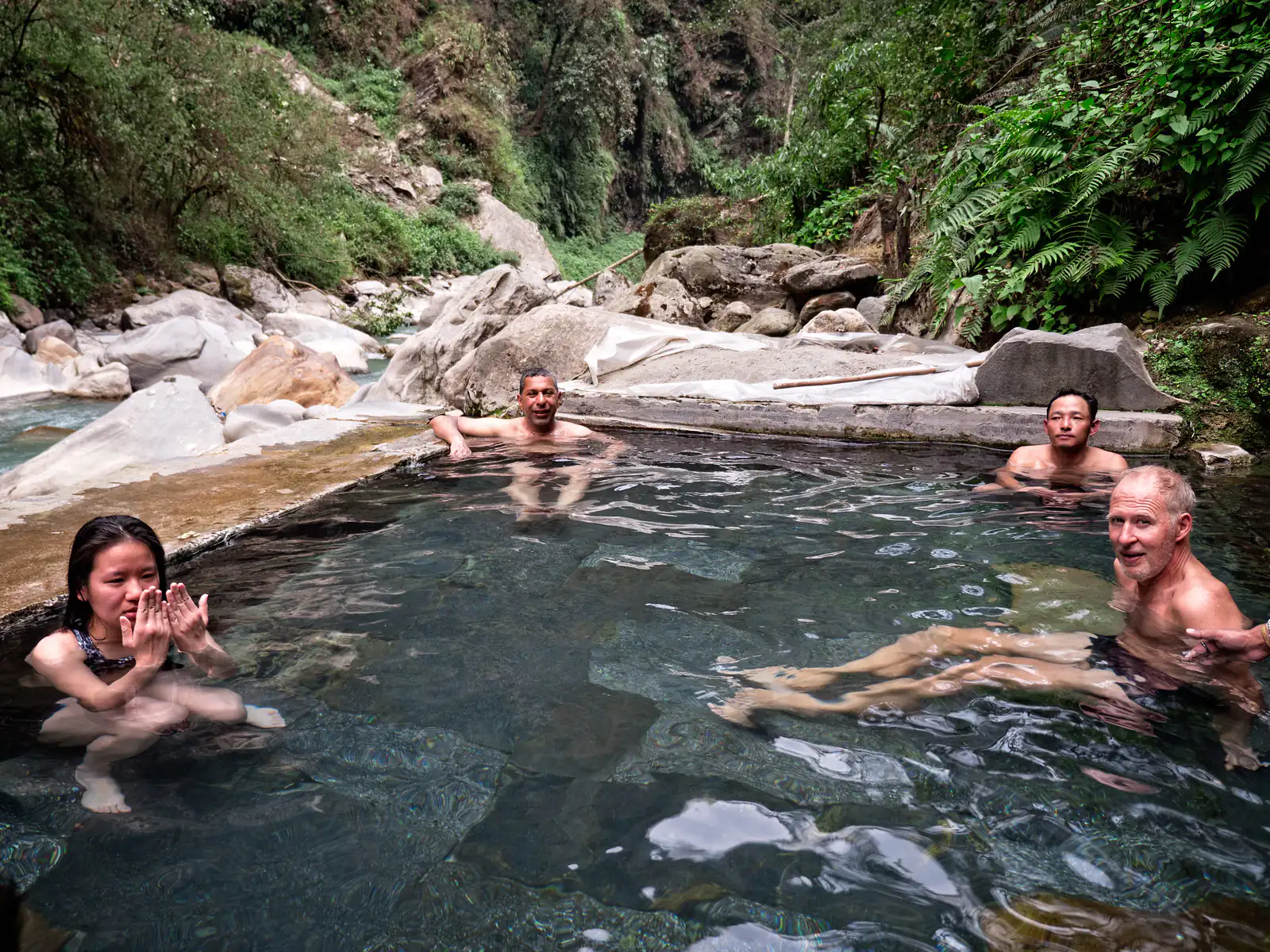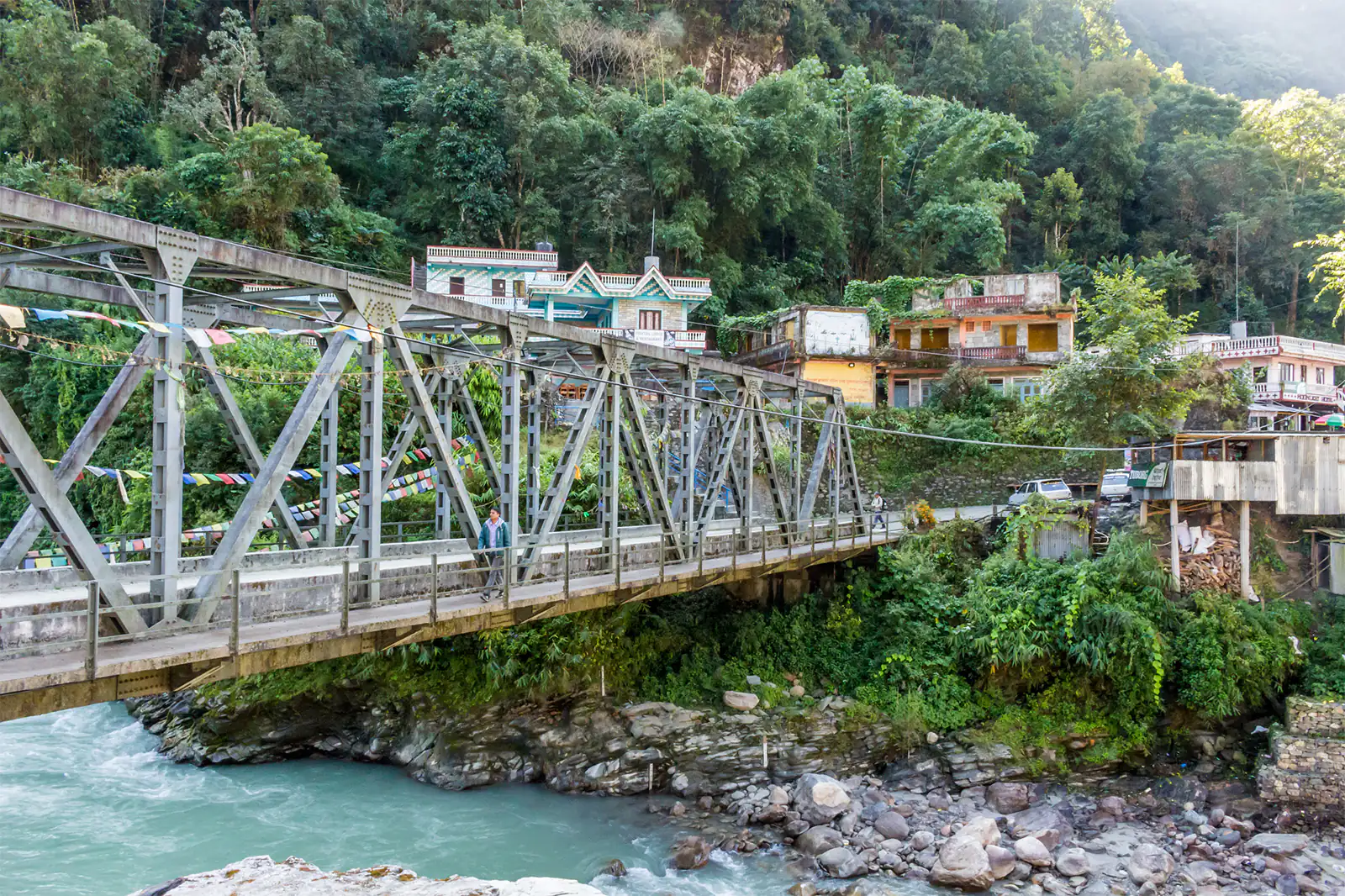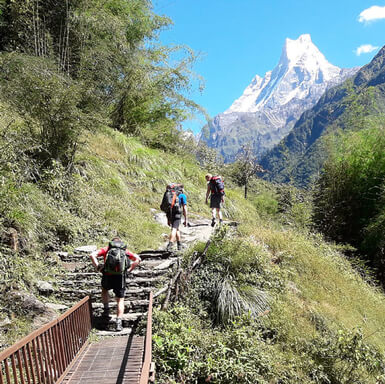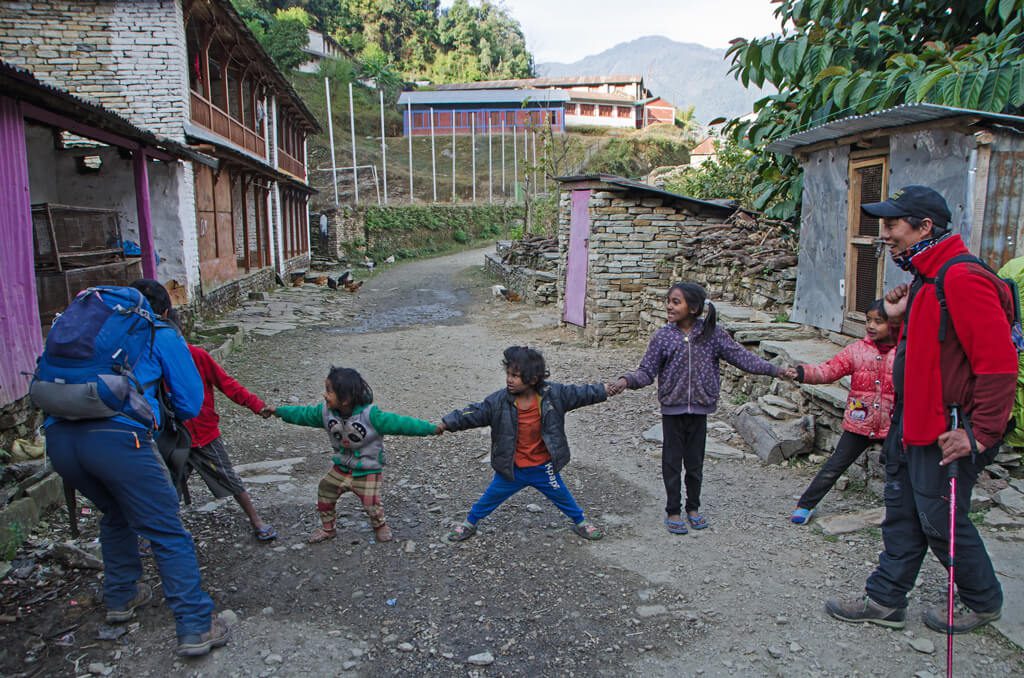4 – Getting started with a trek to:
Everest Base Camp
The official start for the route to Mount Everest Base Camp is in Lukla. The first option is to take a bus to Jiri from Kathmandu—the bus ticket costs from NPR 1800 to NPR 2000. The ten-hour bus ride is exhausting and, at the same time, a unique experience that belongs to a trekking adventure in Nepal.
Then, a six to seven-day hike to Lukla awaits you. You can get used to hiking and acclimatize a little during this time. You can start a shorter hike to Lukla from Salleri, which only takes three days. Or you can rent a jeep from Kathmandu to Salleri from NPR 23000.
If you have less time, the most convenient, fastest option is a flight to Lukla at $190 per person.
Annapurna Base Camp
Getting to the Annapurna Base Camp from Kathmandu is pretty straightforward: if you are short of time, you can travel in a chartered helicopter from Kathmandu at $3500 or Pokhara at $1800.
If you have enough time, you can hike from Pokhara, which will take 5-7 days. The three options available are the routes from Ghorepani Poon Hill, Ghandruk, or Dhampus.
5 – Following the Legendary Footsteps at:
Everest Base Camp
Trek to Everest Base Camp is filled with the spirit of mountaineering everywhere. Almost every lodge has portraits of the discoverers; quite often, there are monuments to the fallen climbers. Tenzing Norgay, Hillary, George Mallory, Reinhold Messner etc. Everything here is saturated with names that have entered the history of mountaineering.
The trail to Everest Base Camp is abundant with commercial and sports expedition tents. Everest Base Camp is an opportunity to touch on the history and legends of mountaineering.
Annapurna Base Camp
Hiking at Annapurna Base Camp is filled with the fun of exploration. The path filled with the diversification of landscapes among the fragrant nature is more thrilling than any trekking trail in Nepal.
You can also combine your tracks with other routes if you wish. From Chomrong, the track will be uniform, which you can cross by following your thoughts and imagination.

6 – Difficulty
Everest Base Camp
The first difficulty with the EBC trek is the altitude. This trek (if you will reach Kala Patthar) climbs above all others. The trek requires at least two stages of acclimatization.
The last stage (from 5000 to 5644 m altitude) requires spending the night in the previous refuge at 5000 m.
The second difficulty is the cold. It is much colder than in the rest of the treks in Nepal. You must be well-prepared and wear appropriate mountain clothing. The shelters usually have extra blankets; you can ask for a double blanket.
In terms of length, you can do the regular Everest Base Camp Trek in 11 days, reaching the camp on day 8.
Annapurna Base Camp
The path can be tiring if you are not physically fit, as it has endless steps up one way and the same number of steps back down.
The climate of Annapurna Base Camp is more humid, so almost every day, it dawns clear.
Unlike the Everest Base Camp trek, this does not require acclimatization stages.
Walking to Annapurna Base Camp, you reach your destination on day 5 or 6; the total duration is about eight days.
7 – Permits
Everest Base Camp
The Everest Base Camp trek requires two permits:
Khumbu Rural Municipality Permit: You can obtain this permit from Monjo or Lukla, for which the fee is NPR 2000 per person for the first four weeks of the visit. After a time limit of four weeks, the cost exceeds NPR 2500 per person.
The second permit is the Sagarmatha National Park Entry Permit: You can acquire the license from the Nepal Tourism Board in Kathmandu or at the Sagarmatha National Park entrance gate.
If you are a resident of the SAARC nations, you have to pay NPR 1500 per person. In the case of foreign nationals, you pay NPR 3000 per person.
Annapurna Base Camp
Since the Annapurna region lies within the Annapurna Conservation Area, for this trek, you need two permits:
ACAP (Annapurna Conservation Area Permit), for which you must pay NPR 3000 per person if you are a foreign citizen. If you are from the SAARC nations, the fee is NPR 1000.
The second permit is TIMS (Tourism Information Management System), for which the fare is NPR 2000 per person without a guide and NPR 1000 per person with a guide.
Both permits are available from the Nepal Tourism Board office in Kathmandu or the ACAP office located in Pokhara.
8 – Budget
Everest Base Camp
Trek to Everest Base Camp is costly, especially if you fly from Kathmandu to Lukla. You can also walk to Lukla from Jiri (reachable by bus from Kathmandu), which takes about six days. The complete tour may cost between $2100 and $4500, excluding personal expenses, food, and beverages. The cost of these items may get expensive as you move up.
You can expect to spend around 30-40% more on Everest for food, shower, and electricity. However, they remain affordable, and you can easily fit them into a budget of 30 dollars daily.
Annapurna Base Camp
In comparison, the Annapurna Base Camp trek is much cheaper. The total package for the trek ranges between $600 to $900, again excluding personal expenses. Usually, $25 per day would suffice for your expenses during the Annapurna Base Camp trek.
Some common Factors between Annapurna Base Camp and Everest Base Camp
Annapurna vs. Everest Base Camp Trek Accommodation
All trekkers live in lodges on Everest Base Camp and Annapurna Base Camp tracks. These are relatively modest hotels: double rooms with two beds and sometimes a table. The shower and toilet are usually in the corridor but sometimes in the room (at low altitudes).
The shower exists and is available to those who wish every day. On Annapurna, lodge owners heat water in cisterns by the sun or gas, for which they may charge $1-$2.
The situation is tricky at Everest Base Camp; hot showers are only possible if the water is heated with a gas bottle. This service is available in every lodge and costs $4-5. At high altitudes, the showers are cold and sometimes windy.
At the beginning of the trek to Everest Base Camp (Phakding, Monjo, Namche Bazaar), hotels have in-room showers and 24-hour hot water. They are expensive, ranging from $10-$20. Also, on Everest, some villages at the beginning of the track have hotels at a symbolic price of $100-200 per night.
Local Culture in Everest and Annapurna
On both tracks, all the villages on the main trail are a collection of hotels, restaurants, and shops. Everything in them is geared towards tourists; almost all residents are involved in the tourism business. But it is worth stepping aside even a little; you can see a different picture.
Many immigrants from Tibet the mountains brought their colorful culture. Both tracks have authentic Buddhist monasteries – this is a must-see.
Wi-Fi Access in Annapurna and Everest
You may wonder if there is Wi-Fi on both of these treks. The excellent news is Wi-Fi is almost everywhere on both treks. The signal strength may vary, so streaming Netflix or other things that need high speed is impossible, but WhatsApp chats and uploading photos are possible. You may have to pay $1 to $4 for the service.
Besides, NCELL 3G and NTC services are available even in the remotest villages of Nepal. If you buy a SIM card for these services, you can have access to the internet, plus you can also make calls.
Summary of Annapurna vs. Everest Base Camp Trek
Choosing between Everest Base Camp and Annapurna Base Camp is difficult. Each of the two treks is worth the energy it costs. Annapurna is a better choice for first-time hikers as it is easier, less intense, and less time spent at high altitudes. Everest, however, remains a symbol of magnitude and legend. Both treks require good health, a strong mind, and a positive attitude toward trekking – if you have all that, plunge into the journey of both treks for an invaluable experience.

